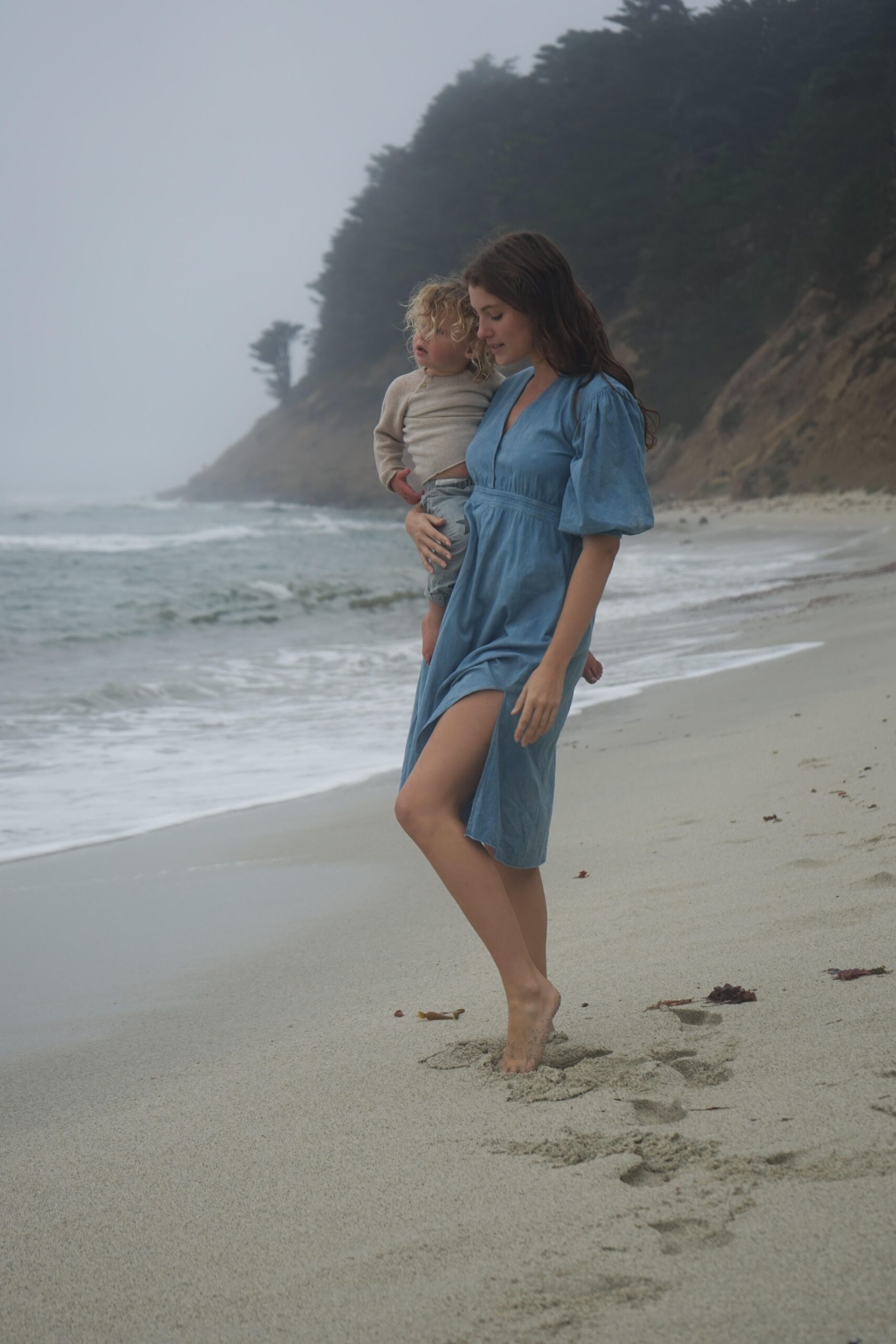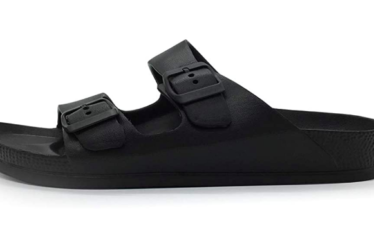
In February, ARQ, the Oregon-based purveyor of ethically made high-waisted granny panties, sculpting tank tops and other exaggerated underwear, quietly stopped accepting returns. The next month, it put much of its inventory on sale, stopped updating its Instagram and informed customers it was shutting down. A comment left by the screenwriter Lesley Arfin on the brand’s final post served as an eulogy:
“I CANNOT BELIEVE YOU ARE DONE THIS IS CRAZY!!! ITS TJE ONLY UNDER WEAR I WEAR I AM SO UPSET & FREAKING OUT!!!”
Arfin wasn’t the only fan in shock at ARQ’s demise. The brand had achieved near ubiquity in the world of slow fashion, a movement rooted in replacing overconsumption with thoughtful purchasing habits. Just two years earlier, ARQ had earned a glowing New York Times profile and was a go-to brand for slow fashion influencers. Now, all that remains is a black screen overlain with white text reading in part: “Our site is closed for now. (Or, potentially, forever if that feels right.)”
ARQ soon had plenty of company in the sustainable fashion graveyard. Also in March, Selva Negra, an eclectic line that specialised in fanciful evening wear, announced they would wind down operations due to “financial distress.” HAH, a sustainable lingerie brand carried by Victoria’s Secret and Free People, ceased operations in April. Elena Bridgers, whose maternity line Hera California boasted a completely transparent supply chain, shut down in April. Last month, Sotela, an LA-based label making colourful, pieces, said it would close its online store.
The closures reached a critical mass when Mara Hoffman, whose figure-hugging colourblocked popcorn dresses were one of 2023′s defining trends, announced she would fold her namesake label at the end of May. Hoffman had been in business since 2000 and shifted to a sustainable production model in 2015.
“We have been fighting for what feels like a long time to make this vision and model work in an industry that I believe deep down in its heart wants to heal and become better,” the designer wrote in a post announcing the brand’s closure. “But at the end of the day, its structure is archaic and was never built to prioritise Earth and its inhabitants.”
Hoffman’s exit came as a shock, signalling that the issues facing these brands ran much deeper than a recent bout of tough luck, or the usual troubles faced by tiny emerging labels. Slow fashion has always been an experiment — will people pay more for clothing they can buy with a clear conscience? To many in the movement, the recent rash of closures raises fears that the answer to that question is no.
Not so long ago, it appeared entirely possible that mainstream consumers would willingly embrace ethical manufacturing techniques, the use of organic natural fibres and durability over price and trendiness. Many used the lockdowns as an opportunity to reconsider their life’s purpose, and slow fashion’s focus on thoughtful consumption captured the zeitgeist.
But the market, never all that big to begin with, quickly became crowded with new labels, which competed with established brands touting their own, often dubious eco credentials. Changes to social media algorithms prioritised large brands with big advertising budgets, making it harder for emerging designers to get their products in front of potential customers. Inflation dealt a double blow: consumers had less disposable income, so pricier ethical purchases took a backseat. It also raised the cost of adhering to slow fashion values; brands rooted in compensating workers fairly and using high-quality, natural fibres had fewer options to cut corners as their expenses soared.
The slow fashion model is constantly evolving, and there are still plenty of brands out there promoting ethical consumption – Eliza Faulkner recently opened a brick-and-mortar store in Montréal. But the movement’s future is cloudy, and many labels see a tough slog ahead.
“On release days it used to be so loud and busy,” said Kayla Krische, operations manager of Shelter Clothing, a slow fashion brand best known for its double-knee Brewer’s denim, which in April held a 60 percent off sale to raise funds it said it needed to produce another collection. “Now we’re checking to see if the website is broken because it’s been such a drastic shift.”
Little Room to Manoeuvre
Even as sustainable fashion became trendy, the pressure to reduce manufacturing costs and lower prices has only intensified.
“The US market is flooded with fast fashion, so people are used to paying a very low price point for relatively nice clothing,” said Elena Bridgers, who launched her slow fashion line Hera California in 2023.
In April, she posted a video to Instagram where she told followers she had given up on the idea of making a living from her brand.
“The entire year I was operating the business, I was spending more money than I was making and I wasn’t paying myself anything,” she told BoF. “I wasn’t seeing any path forward.”
Many slow fashion brands try to turn their higher costs to their advantage, offering customers transparency about their methods to convince them to pay more. But that argument mainly resonates with consumers who were already willing to pay a premium for ethical clothing.
“If you look at consumer purchasing decisions, people choose the lowest price for the best perceived quality and style,” Bridgers said. “That’s rational. You can’t fault consumers for thinking that way. It’s a really small segment of people who live their values when it comes to sustainable fashion.”
Slow fashion brands are taking drastic steps to cut costs without sacrificing their values. Loud Bodies, a size-inclusive label based in Romania, is abandoning its made-to-order model, which reduces waste as there is little leftover inventory, but is also more costly than mass-produced fashion. Some customers also balk at waiting weeks or even months between placing an order and receiving it.
In May, founder Patricia Blaj told customers she would move to seasonal collections.
Blaj told BoF that her brand basically broke even in 2022, and then only because she didn’t pay herself a salary. She said she’s run up against an unshakeable belief among many consumers that clothing should be cheap, even if that means relying on underpaid labour.
“A big conversation in the sustainability sphere is when people try to fight with sustainable brands for their pricing,” she said. “You shouldn’t be angry with me for being an ethical employer, you should be angry at your employer for not paying you well enough that you can afford to buy clothing that doesn’t involve exploitation.”
Unresolved Tension
At the heart of the slow fashion ethos, there is a tension between encouraging consumers to make thoughtful purchases and buy less, and the bottom line.
“Customers want new things. They want styles that look like what’s trending,” said Sotela founder, Hanna Baror-Padilla. “Slow fashion brands [tend to] stick with their tried-and-true styles, but customers don’t want to keep buying the same thing over and over.”
Investors, too, are unused to working with brands where the priority isn’t built around maximising growth and profits. Mara Hoffman and other slow fashion designers built – or aspired to build – big businesses. Others viewed their labels as passion projects, and worried outside investors would apply pressure to dilute the ethics of their brands.
Hanna Baror-Padilla started Sotela with $20,000 raised through a Kickstarter campaign; Kristen Gonzalez founded Selva Negra with a $3,000 investment from friends and family. At their highest points, annual revenues were still a relatively modest $250,000 and $330,000 respectively.
Several founders told BoF that government support could create a viable future for slow fashion.
There has been action on this front. In 2022, California’s Garment Worker Protection Act began requiring manufacturers to pay garment workers an hourly rate, instead of by the piece. The European Union has implemented regulations aimed at reducing fashion waste and putting the brakes on fast-growing online fast fashion retailers such as Shein.
“Starting wages and overproduction are at the core of this broken system, and I think that we have to address those things in order to create an environment in which [slow fashion] businesses can thrive,” said Emily Stochl, host of the Preloved podcast, which interviews major players in the sustainable fashion sector.
Gonzalez suggests artist grants be awarded to fashion entrepreneurs to help offset the cost of doing business.
But these are long-term goals. For Gonzalez, time has run out. She had sustained her business with small business loans, but found as sales slowed last year, and costs jumped 60 percent, she could no longer pay her factories and employees on time.
“I was financially in such a deep hole, that I was mentally drained and very depressed,” she said. “After my bank account was negative for the third month in a row I was like, ‘This isn’t worth it anymore.’”



